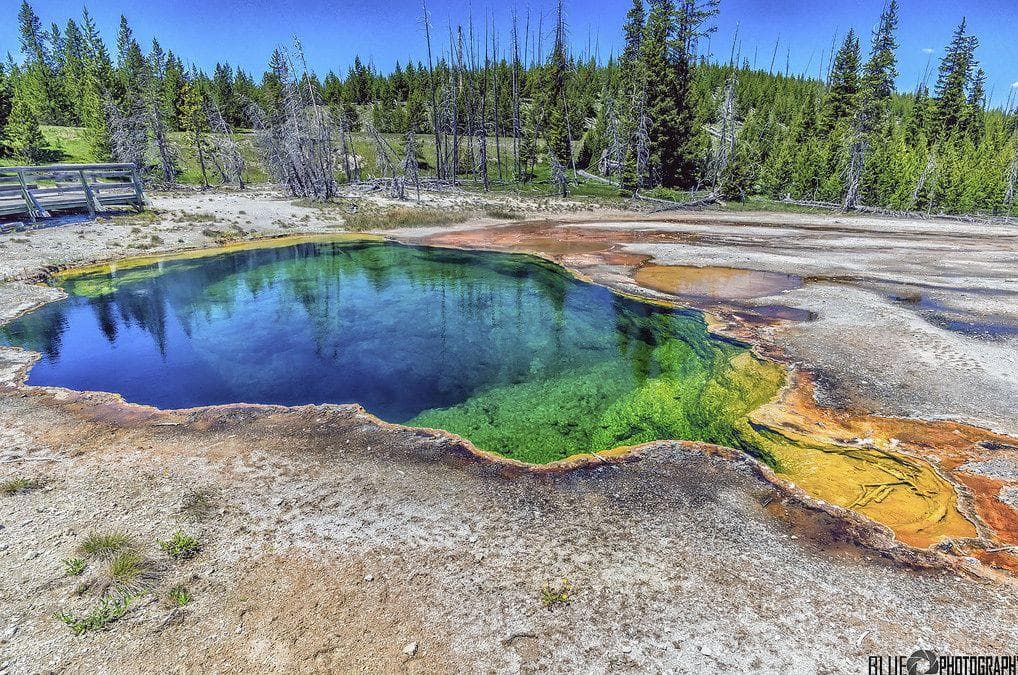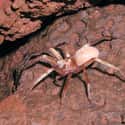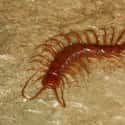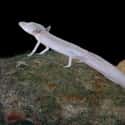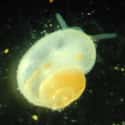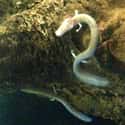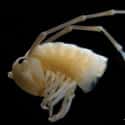-
(#1) KauaʻI Cave Wolf Spider Is Endangered
This cave dwelling critter is blind as a bat, but he’s actually a spider. One of the strangest aspects of his anatomy is that the Kauaʻi Cave wolf spider is the only member of the big eyed spider species who doesn’t have eyes at all. Classified as a troglofauna troglobite, or land dwelling, cave-only creature, this astounding endangered spider is so rare that only three populations of its kind are known to be in existence. Conservation efforts are becoming a pivotal factor in securing this particular spider’s place on the planet. You can find the Kauaʻi Cave wolf spider scurrying through the Koloa-Poipu cave system, hunting down its favorite prey, the Kaua‘i cave amphipod, a tiny crustacean that is, unfortunately, also endangered.
This mesmerizing spider is quite distinguished in its looks. In addition to having a vacant space where eyes should be, it’s also semi transparent and earth toned with silver haired, spindly legs. In addition to population and appearance, the Kaua‘i is unique in that it lacks the characteristic most associated with spiders to begin with. It doesn’t take the time to spin a web. In order to devour prey, this eyeless, webless spider relies on its three vampire-esque, puncturing fangs and its fast, nimble legs, hunting, capturing, and consuming all in one exaggerated movement.
-
(#2) Cave Dwelling Rat Snakes Dangle From Cave Ceilings
Of all the wonders that caves and caverns hold, who knew they would be guarded by their very own species of snake? This is certainly true of the caves in Thailand and along the Peninsular Malaysia. Cave dwelling rat snakes are a subspecies of the land dwelling beauty rat snake and they possess a similar vicious temperament. The cave dwelling variety survives on regular meals consisting of cave dwelling bats. In one particularly batty cave, these snakes that can grow four to eight feet long upon adulthood, are literally seen dangling from the ceiling on the hunt for fresh flying prey.
-
(#3) Phreatichthys Andruzzii's Biological Clocks Don't Rely On The Sun
Phreatichthys andruzzii are an amazing example of a highly adapted subterranean species. Found in the deep sea caves of Somalia, these non-pigmented ray finned fish are entirely blind and suspected to have been dwelling in cave environments for more than 2 million years. They fall under the classification of stygofauna troglobites, or obligate nautical cave dwellers. They survive by consuming fallen sea insects and other aquatic debris.
This small, silvery species has been the subject of study and controversy for many different reasons. Firstly, it is the one and only animal to be discovered on earth whose biological clock does not rely on the light of the sun to function. Secondly, since it appears to have survived for millions of years without the presence of sight, its numerical acuity - or the ability to process numbers and time - has been studied by scientists. Why? Because these fish can differentiate numbers and time without being able to see.
-
(#4) The Olm Is The Only Salamander Who Spends Its Entire Life Underwater
The olm is a true aquatic troglobite with characteristics distinct to its cave dwelling lifestyle. While it might resemble a translucent snake, or even a body snatching space creature, this odd-looking animal is actually a salamander. It spends its entire life underwater, which is unique to other salamanders found outside of the cave system.
The olm is technically blind, but its sensory system does come complete with photoreceptors that allow it to retain light sensitivity, a component several cave creatures lack, most notably the Phreatichthys andruzzii. The olm is also equipped with taste buds that can detect toxic chemicals, a lateral line that supports up to 15,000 Hz of underwater hearing, and a previously unknown organ on the crown of its head that scientists are now referring to as the ampullary organ. This salamander also has some sort of perception of the Earth’s magnetic field.
-
(#5) The Cyber-Centipede Is The First Of Its Kind To Have Data On It Uploaded To A Public Server
Scientifically referred to as Eupolybothrus Cavernicolus, this troglobite got its nickname, the "Cyber-Centipede," for being the first fascinating eukaryotic organism to undergo a scientific process known as transcriptomic profiling. This means that multiple scientific data collected by way of metabarcoding about this cave dwelling centipede will be virtually accessible to the general public. In terms of the centipede itself, it is a previously undiscovered species that thus far has only been seen crawling across the landscape in the caves of the remote region of Croatia.
-
(#6) A Hausera Has A Very Strange Body
This wormy looking guy has some of the most baffling anatomy known to man. He’s a subterranean troglobite from a family of freshwater triclads. Hausera made history when it became the first cave dwelling species of its kind to be recorded in South America. Since then, it has continued to astound the scientific community with its little oddities, which include ovaries positioned within close proximity to the brain, genitalia that seem to communicate with the intestine, and a completely eyeless body void of any sort of pigment.
-
(#7) Texas Blind Salamander
The troglobite amphibian known as the Texas blind salamander wears its gills on the outside, and they are a terrifying crimson shade. Surviving on cave dwelling shrimp and snails, this creepy looking salamander spends its life in utter darkness, with spots for eyes and virtually no pigment upon its flesh. Though the salamander may be blind, he is the ruler within his confined, obligated habitat, the head honcho of the Texas cave system, so to speak.
-
(#8) The Tumbling Creek Cave Snail Lives In One Part Of The World - Missouri
The tumbling creek cave snail shines with a light of phosphorescence. A true stygobite, it must live out its entire life submerged in the confines of a cave. This peculiar looking, freshwater cave snail is only found in the waters of Missouri’s mysterious Tumbling Creek Cave, a location that has functioned as a research center for upwards of 50 years. The tumbling creek cave snail was discovered in the waters there in 1971 but has since remained elusive. At one point, it was believed there was only one living tumbling creek cave snail on the entire planet. As of 2017, there are approximately 40 of them.
-

(#9) The Kaua'i Cave Amphipod Has Played A Huge Part In Hawaii's Ecosystem For Five Million Years
The Kaua'i Cave amphipod is an organic eater, crawling blindly through the darkness of the Hawaiian cave system, prey for an endangered predator known as the Kaua'i Cave wolf spider. Both the spider and this amphipod have some things in common though, namely blindness and the looming possibility of extinction. Stakes are high for this strange, ghostly looking creature whose ancestors appear to have played a pivotal part in Hawaii’s ecosystem for at least five million years or more.
-
(#10) The Alabama Cavefish Lives In Only One Cave On Earth
The Alabama cavefish is incredibly rare, and not just because it’s a pigment-lacking stygofauna from the freshwater of Alabama’s Key Cave. This fish is said to be the rarest fish on the entire planet with an estimated population of just under 100. Listed as critically endangered and only confirmed to be in existence in one cave thus far, the Alabama cavefish is believed to be malnourished due to a lack of guano in the area. Guano is bat excretion that, when consumed by this particular fish, provides nutrients it cannot obtain elsewhere. This species is also unique due to the flat shape of its head.
-
(#11) New Providence Cusk-Eel Is A Mysterious Creature That Loves Blue Holes
This mystifying fish is a Caribbean cave dweller, suspected to be endangered or vulnerable to endangerment as a result of human disturbance. Classified as a stygofauna troglobite, the strange looking cusk eel can currently only be seen by deep-sea diving spelunkers with an aptitude for plunging into the depths of ominous blue holes, the likes of which even some of the most daring adventures are afraid to explore. These eels have been seen thriving in both freshwater and saltwater, making them incredibly adaptable in their habitat and also somewhat difficult to research.
They are known to adumbrate at the entrances of submerged caves in anticipation of capturing their next meal. While the cusk eel is believed to be a passive forager on the hunt, vegetables were found in the intestines of one of its most comparable eel relatives, meaning it might just have a taste for plants and prey alike.
-
(#12) Sinocallipus Only Likes Living In The Tropics
Take a long gander at this tremendous cave creature that has the body of a shrimp and the head of an ant. This bizarre specimen is known as a sinocallipus, a cave dwelling millipede mostly seen between limestone walls in the tropics. This species stands out, not just appearance wise, but also due to its idiosyncratic habitat. For now, it is the only known callipodidan genus that can’t withstand non-tropical habitats. Classified as a troglobite or troglofauna, it prefers land caves to blue holes and features six known species.
-
(#13) Blind Cave Crayfish, Unsurprisingly, Has No Eyes
Like the Kaua'i Cave amphipod, this stygofauna is an organic eater adjusting to a harsh environment. The cave crayfish is a blind, colorless specimen scurrying in the cave waters of the deep South. This aquatic crustacean is an obligate critter, restricted to the cave region. Sometimes known as the "Phantom Crayfish" because of its ghostly appearance, the cave crayfish has managed to multiply its life expectancy by five times that of any other crayfish on the planet. Of course, this evolution was at a price - it no longer has eyes.
New Random Displays Display All By Ranking
About This Tool
Do you believe that there are alien creatures living on this earth? At present, there is no breakthrough in scientific research on alien organisms. Therefore, many people have all kinds of speculations about the advanced civilization of aliens. Few people have realized that there are some weird alien-like species on our beautiful and mysterious blue planet, some of them have an evolutionary history of more than thousands of years.
Nature has countless great wonders. The random tool introduced 13 creepiest creatures in the world that only live in caves, some of them are common but dangerous, including mammals, amphibians, insects, and more.
Our data comes from Ranker, If you want to participate in the ranking of items displayed on this page, please click here.







